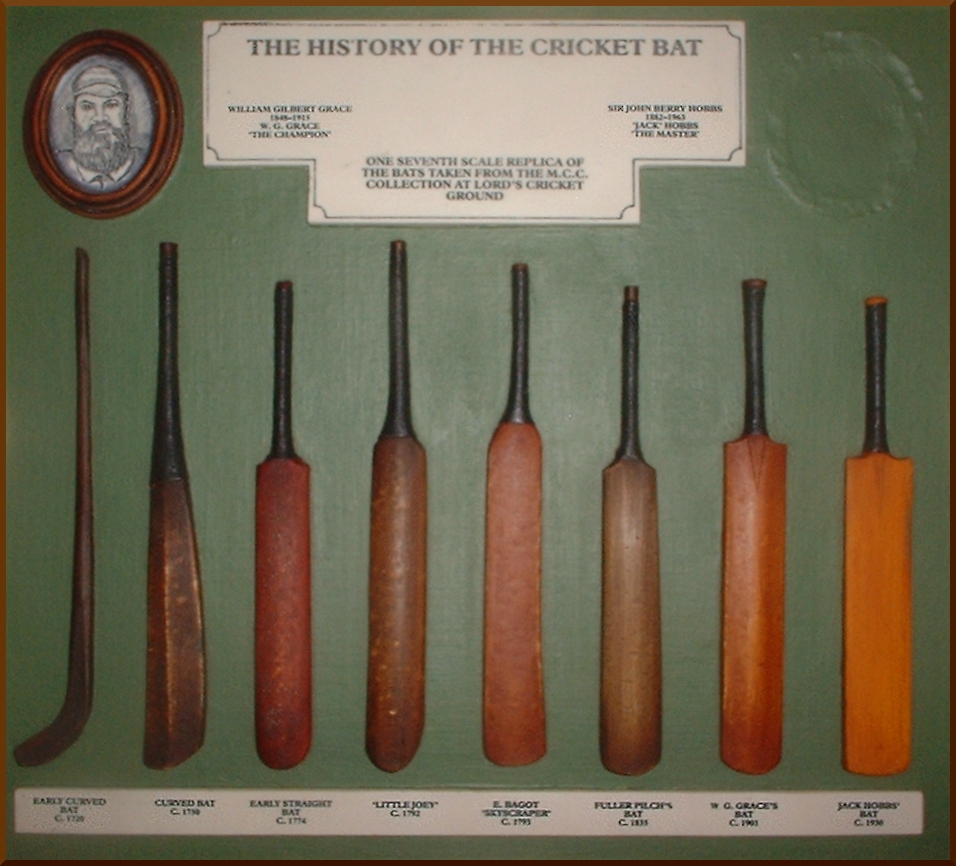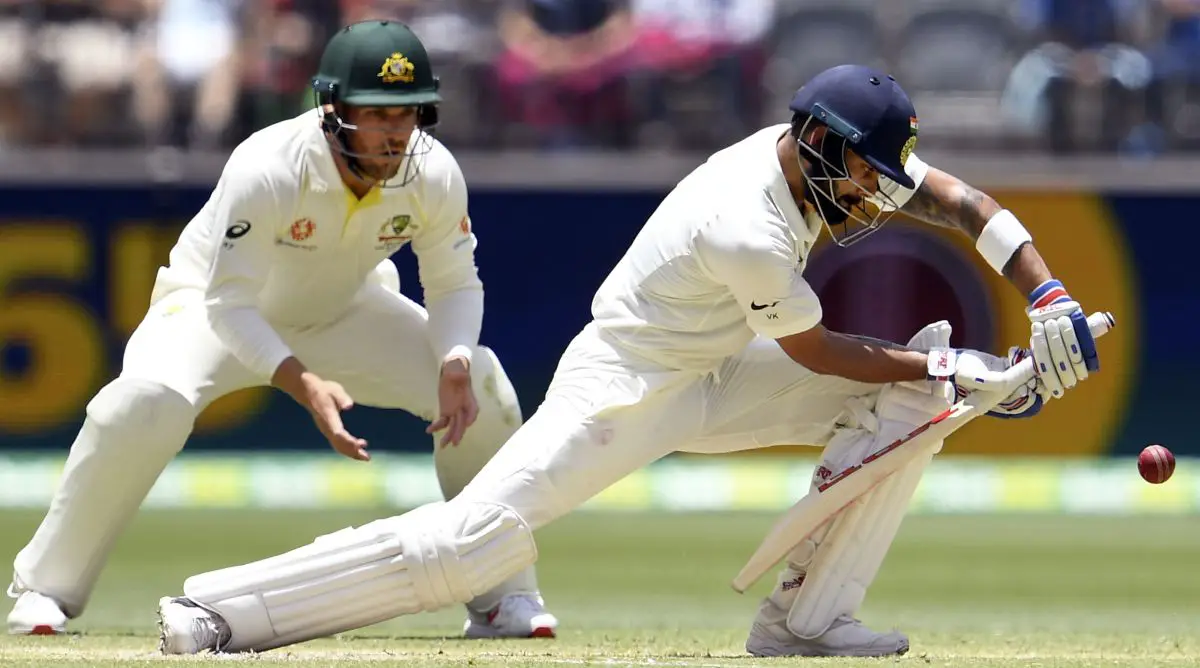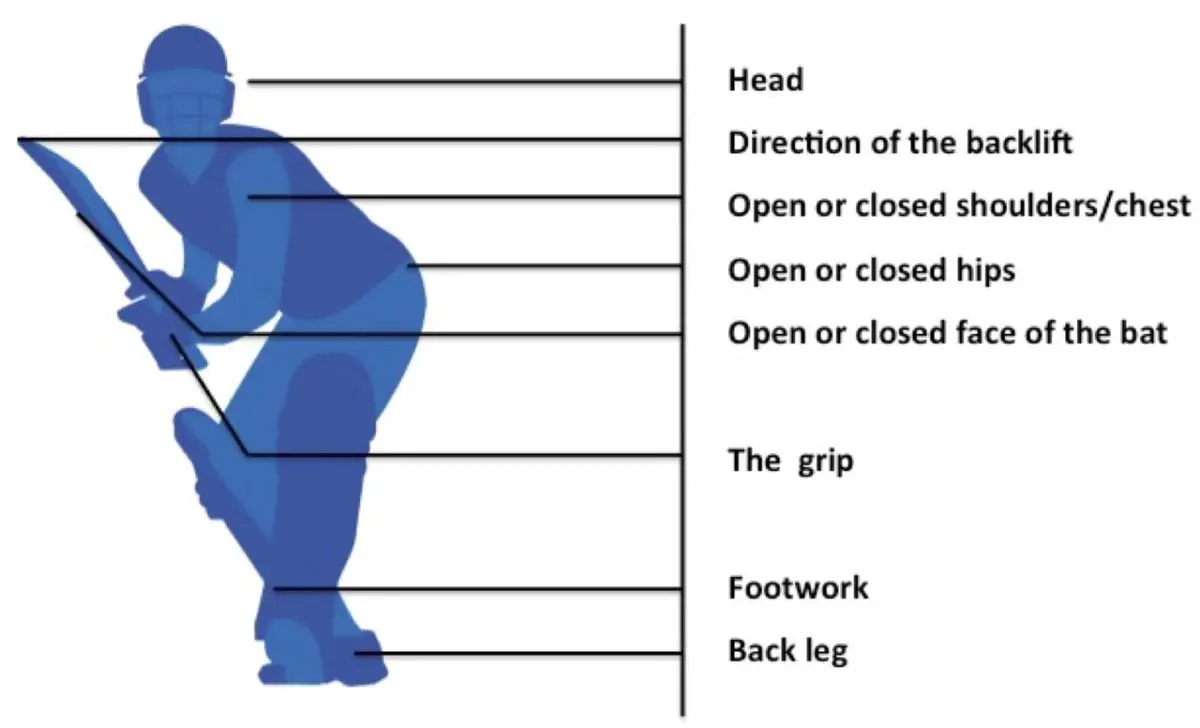Have you ever noticed the curve on the Cricket Bats? The cricket bats have had a number of shapes over the years. Initially, bats more closely resembled hockey sticks. However, they now have a very distinct size and shape, which is instantly recognizable, and which includes a significant curve.
Cricket bats are curved in order to make it easier for batsmen to hit the ball farther with less effort. The curve reduces the weight in the rear of the bat, while also improving the overall structure. It also maximizes the potential power of a shot when the bat hits the ball.
However, why and how this curve became such an integral part of the cricket bat is central to understanding how the game is played to this day. Here’s why!
How has the Cricket Bat Changed Over Time?

When cricket first began to emerge as a popular pastime in 17th century England, the bats they used were far from the shape we see today. That said, they were curved, just much more like a hockey stick than the straight-edged blade we’re used to seeing today.
Over time, and as the rules changed, the bat slowly evolved into the shape we know and love today. Something to be thankful for, especially if you’ve ever tried to hit a ball with a hockey stick. You’ll find that it doesn’t fly off the wood with quite the same pace and bounce that balls come off a cricket bat!
Bats were initially made from just a single piece of wood. However, any batsmen will tell you, it isn’t a nice feeling when you hit the ball with any part of the bat directly connected to the handle. It creates a nasty vibration that can cause lasting injury!
More importantly, however, having a bat made from a single plank of wood was incredibly weak and they were prone to snapping – especially as bowling got faster over the years.
Therefore, since the end of the Victorian era bats have typically been made from a cane handle, which is spliced into the main part of the bat that’s made from willow. It is this willow part of the bat that is carefully sculpted, shaped and pressed, in order to generate maximum strength, balance and power.
How Are Cricket Bats Made?

To this day, most bats around the world are made (at least in part) by hand. This means that they can be carved precisely to the shape desired, and the shape which will get the best out of the wood that it is made from. Most bat makers use one of two specific varieties of willow, either White Willow or Salix Alba.
The two most common varieties of wood used in making the cricket bat result in two of the most popular types of bats – the English Willow and the Kashmir Willow. We wrote a detailed post on the difference between the two, and the type of bat that you should be going for in the post indicated below!
Part of the reason cricket bats are curved like they are is due to the way in which they are manufactured. Bat makers and batsmen alike can also be very picky about how straight the grains in their piece of willow are, and how far apart these grains lie. These factors determine whether the bat is of Grade 1 or Grade 4 quality.
This grading system is a means of determining the look of the bat, in terms of the grain direction and density. Although, this doesn’t necessarily mean it will perform the best.
More often than not, it is the craftsmanship of the bat maker that will determine this. An important process in the initial stages of making a bat is to press it. This applies a lot of pressure to the wood, which in turn begins to shape the bat into its final curved shape and compresses the wood to make it stronger and springier when it comes into contact with the ball.
Once it is pressed, the handle is spliced into the main face of the bat and it is then shaped and carved by hand. At this point the bat maker will remove any wood that aren’t structurally important, or the removal of which won’t impact the potential power of the bat.
This combination of stages is key in shaping the bat so that it bows from the handle to the toe. However, they aren’t purely doing it for aesthetic reasons. There are a number of practical impacts that the curvature has when it comes to actually standing out in the middle and playing a few shots.
What is the Impact of the Curve on a Cricket Shot?

One of the most important reasons for the curvature of a cricket bat is to make playing some of those shots you might wish to play easier. The slight curve towards to toe enables players to strike the ball at angles that otherwise wouldn’t be possible.
For example, when playing a late cut or a hook, the curve means that the batsman is able to direct the ball in whichever way he or she desires. It’s especially useful for shots where you are flicking the ball away, whether off your pads through the leg-side, or over your head when playing a Dilsscoop.
Similarly, when playing a defensive shot, the curve created an angle from which the ball will bounce more directly towards the ground if the batsman times the shot correctly. Therefore, the curvature of the bat can be utilised in almost any and every shot the batsman plays, which demonstrates just how important it is.
Does the Cricket Bat Curve Affect the Weight of the Bat?

A research report, published in the BMJ Journal [link to the research], concluded that – “A bat that isn’t the right weight for a batsman can disrupt any one of the various important factors in a batsman’s stance and technique.”
One reason that the cricket bat is curved towards the toe of the bat is to enable a greater weight distribution and make the bat easier to hold. Now, different batsmen prefer bats with different weights. Some prefer a slightly thinner blade and others like something with more depth and weight to it.
If a bat is too heavy for a batsman, it can throw every other aspect of their positioning off while they’re setting themselves to hit the ball. This is an often overlooked, but very important reason to make sure you are comfortable with your bat and chose one that is the right weight for your style and stance.
The curve of the bat serves to distribute the weight evenly in relation to where the batsmen holds the bat, especially when they take their back-lift when waiting for the ball to arrive. This then obviously carries through the shot, so that at each point the batsman can feel in complete control of his or her blade.
It ultimately forces the batsman to have his hands positioned over the top of the ball at the point when it makes contact with the bat. This makes it harder, so long as your technique is correct, to scoop the ball into the hands of a nearby fielder.
Why is the back of the bat curved?

Structurally, the bat benefits from having a slight curve, to both its front and rear. The shape of the cricket bat’s rear side, with the ridge that runs down the centre and follows the curved shape from the handle towards the toe, is important in creating a strong central structure to the bat.
This ridge, or ‘swell’ as it is known, also indicates where the bat will have the most power. This is the spot on the bat which is often known as the ‘sweet spot’, and there is no better sound in cricket than when the ball pings out of this and flies towards the boundary.
Generally speaking, the meatier the bat the further you will be able to hit the ball. Although, the quality of the wood used to make the bat is ultimately more important in this regard. However, if a bat was both thick and not curved, the weight distribution would make it much more cumbersome.
Nowadays, you will often find that bats are much chunkier than they might have been in the past, but they have also managed to make them lighter.
This is a result of years of experience in finding and using the best wood possible, as well as developments in technology and ultimately, years of tweaking the designs to provide the maximum strength, balance, and power. This is something that the curvature of the bat has been key in understanding.
What and Where is the Sweet Spot?

This is the part where things get really technical, but don’t worry, it isn’t as complicated as you might think. The combination of the weight distribution and structural (STRENGHT) the curve gives to a cricket bat are key to creating something that is known in the game as the sweet spot, or the ‘middle’.
The ‘middle’ of the bat generally falls somewhere around 7 to 10 inches from the toe and is the spot where batsmen are able to make the most powerful connection with the ball. That’s why you’ll often hear commentators shouting ‘that was right out of the middle of the bat’ as the ball flies over the boundary and deep into the crowd for six.
There have been scientific studies into the physics behind the ‘sweet spot’ and how it impacts the vibrational characteristics of a cricket bat [link to the research study] among other things. People have been trying to figure out how to understand it and make the most of it. While you could easily get bogged down in the jargon, the basic thing to understand is that the ‘middle’ is actually made up of three distinct sweet spots.
These are the points at which the bat will vibrate the least when the ball strikes it and therefore, the energy that the bat absorbs is then used to spring the ball back in the opposite direction, rather than being wasted and lost elsewhere.
Essentially, the sweet spot is where the wood is most densely packed and where the greatest depth is on the bat. However, different bats have sweet spots with greater surface areas than others and almost no two bats are the same in this regard!
Related Posts That You May Find Useful –
